Vacation 2012
10 July - 9 August
a tour of places in eastern USA

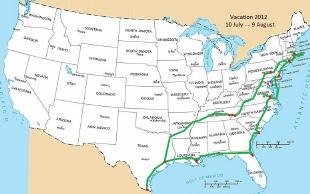
the R-pod travel trailer - - - - - - - - - - - - - - - - - - - - - - - - - - - a map of our travels
Page 10
Monday, 23 July 2012
~ Worcester Polytechnic Institute - - Old Sturbridge Village ~
The folks at Worcester Polytechnic Institute (WPI) had written a few very nice letters inviting Joseph to apply,
so we decided to drive up
and take the tour. Worcester is located 47 miles WSW of Boston and is 69 miles NW
of Middleboro where we were camped.
We arrived in mild drizzling rain, got help from maintenance folks locating the office to get the permit to park on campus.
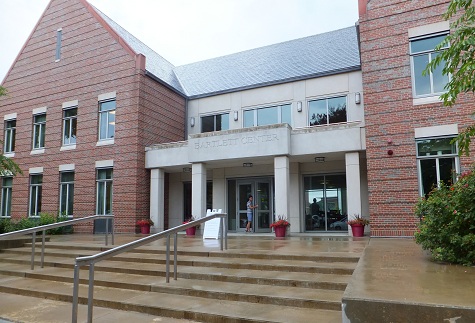
We managed to find the student center where prospective students were gathering... just in time.
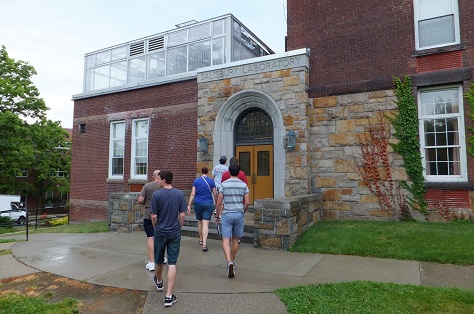 -
- 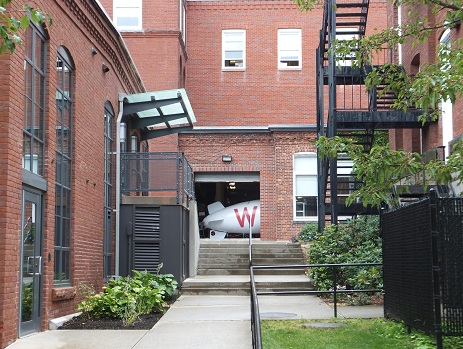
From there we went to a lecture hall for the customary introductory session.
It turns out that WPI is primarily a good engineering school, and is a 4 year institution, not what Joseph was looking for.
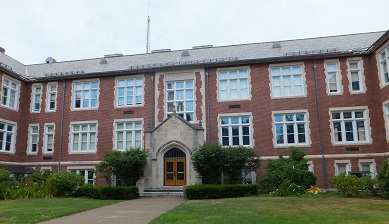 -
- 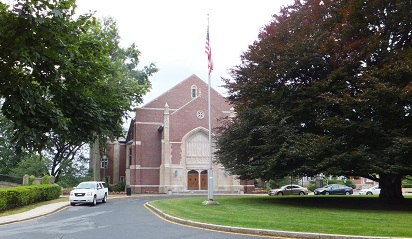
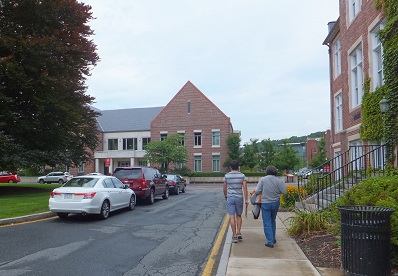
After the lecture session, we left this pretty campus.
From Worcester, Sturbridge is 20 miles WSW
~ Old Sturbridge Village ~
is a living history museum depicting life in New England as it was between 1790 and 1840It is located on Stallion Hill Road about 3 miles SW of the intersection Interstate 90 with Interstate 84.
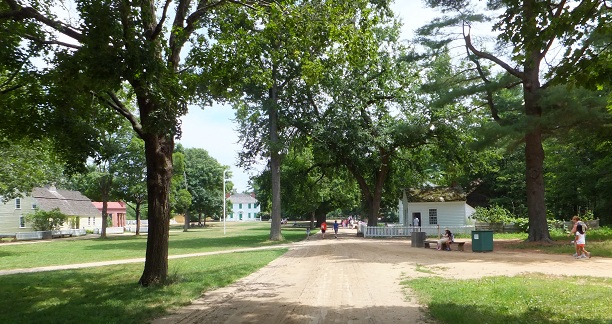
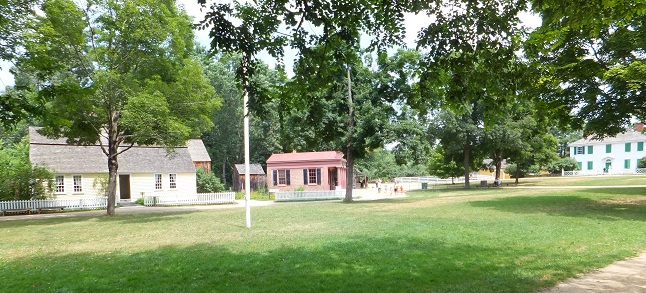
The village green
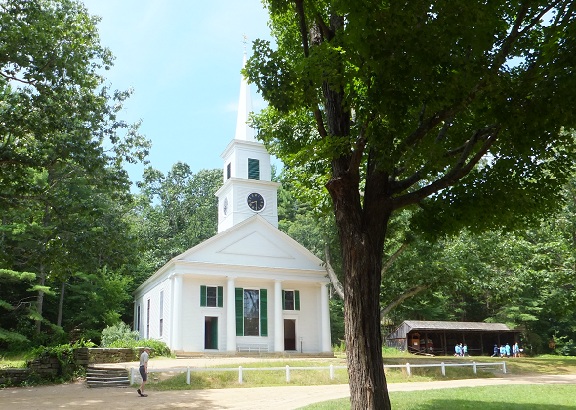
Church
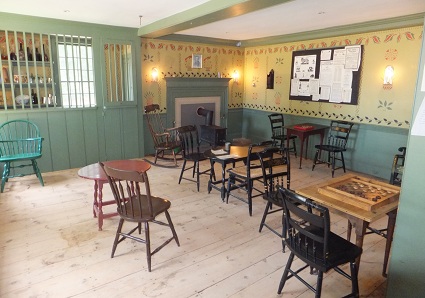 -
- 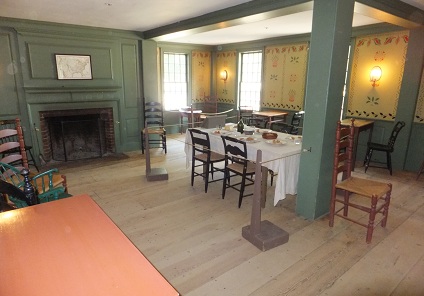
The public house or tavern - an informal village meeting place.
Imediately below the tavern (In what would have been the cellar) there is a cafeteria and dining area.
We had a good lunch there.
~ ~ ~
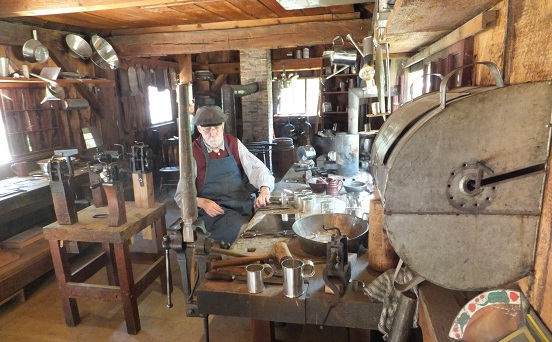
The Tinsmith in his shop. This man is very knowledgeable and talented.
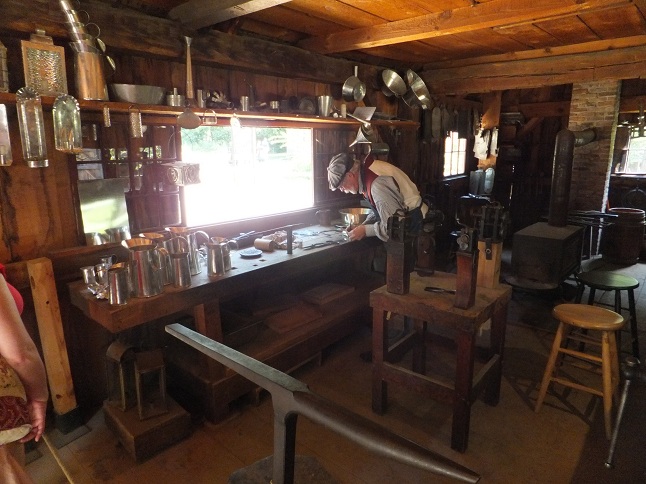
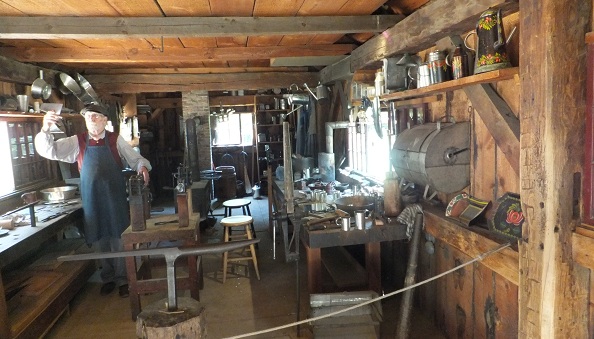
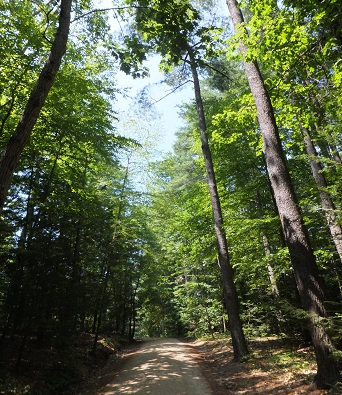
Trail between groupings of buildings.
From out south Texas perspective, these trees are really tall.
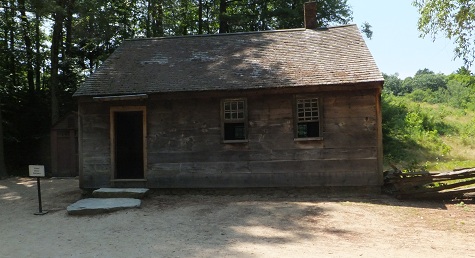
School
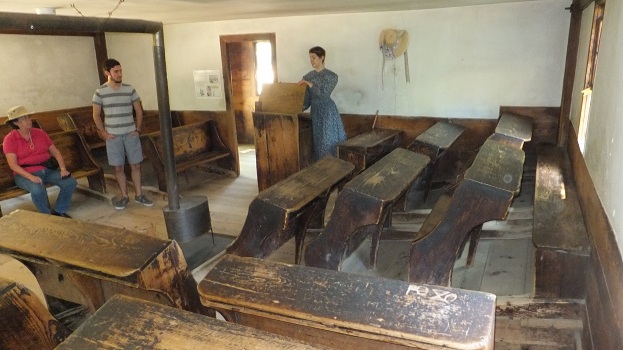
Inside the School. We had a chat with the teacher.
~ ~ ~
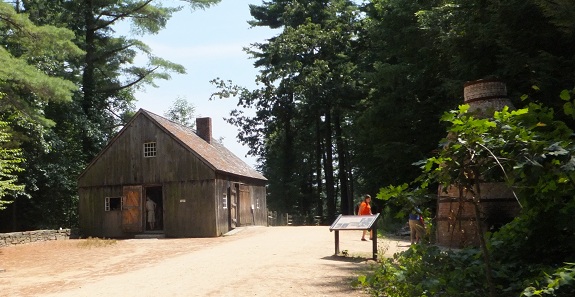
The Pottery shed and on the right a kiln for firing the pottery.
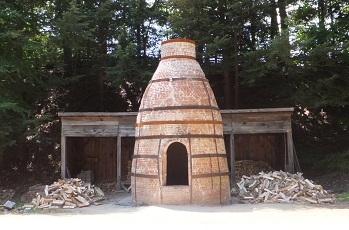
The kiln
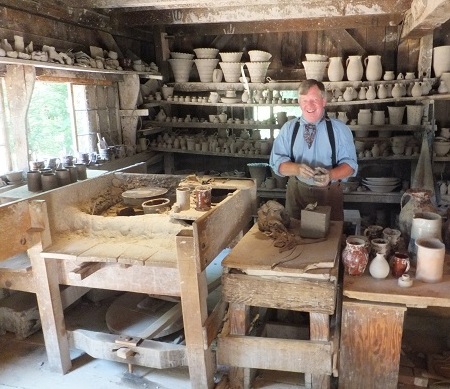
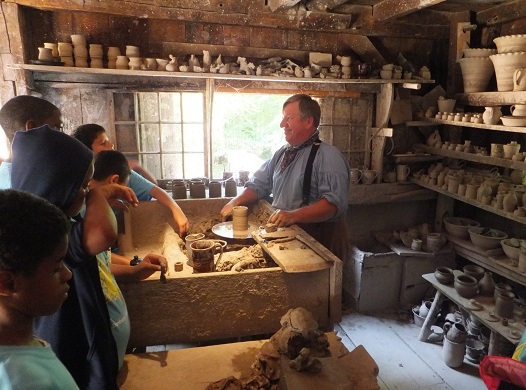
Inside the Pottery shed. The potter also really knows his trade and is good at explaining it.
~ ~ ~
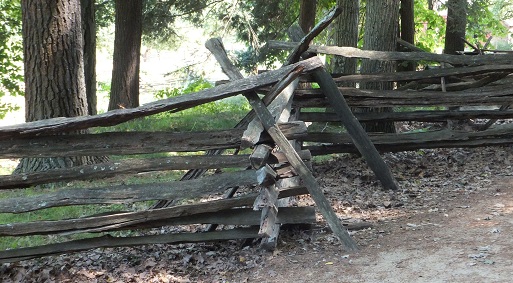
A zigzag split rail fence. Note the angular uprights holding the top rail, and which hold the fence in place.
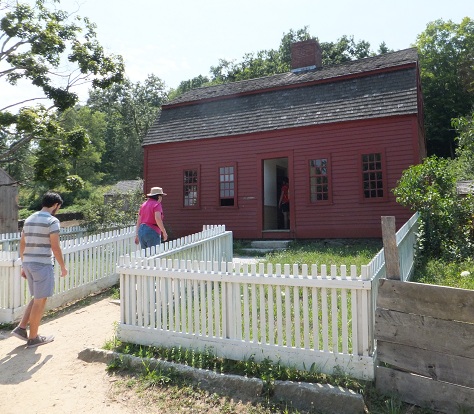
Farm house
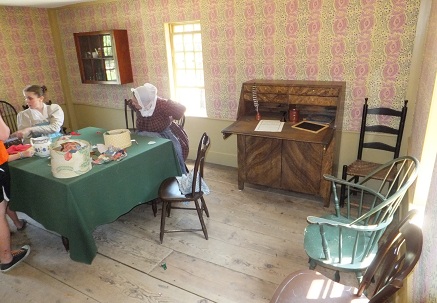 -
- 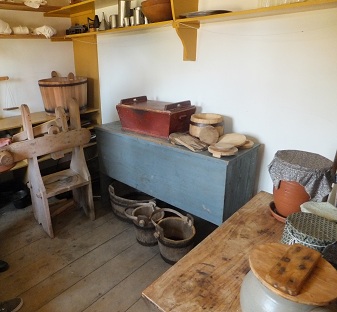
Inside the Farm house
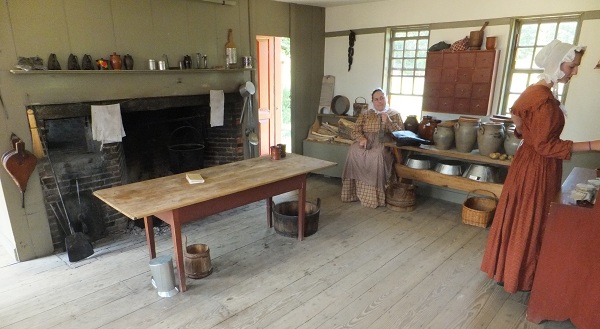
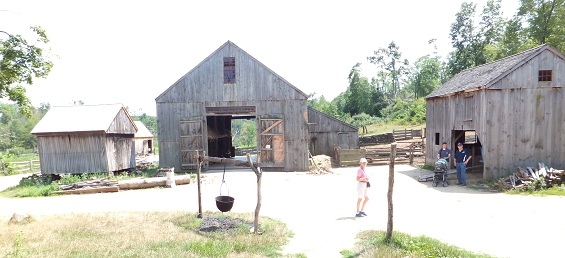
Farm yard - barns
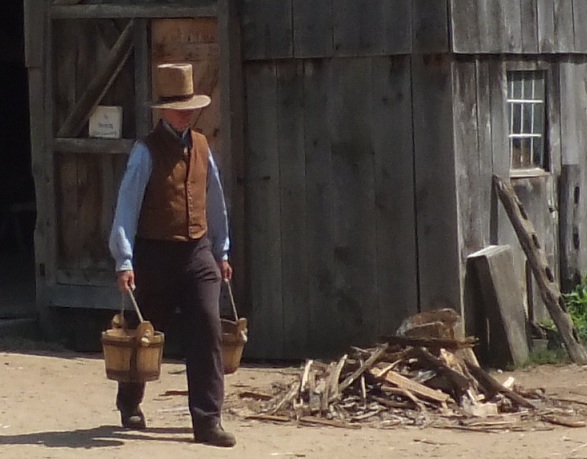
Farmer - well dressed in this era.
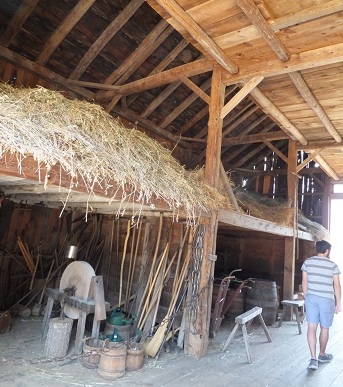 -
- 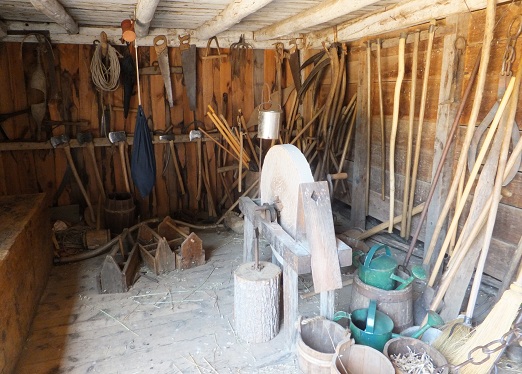
In the Barn
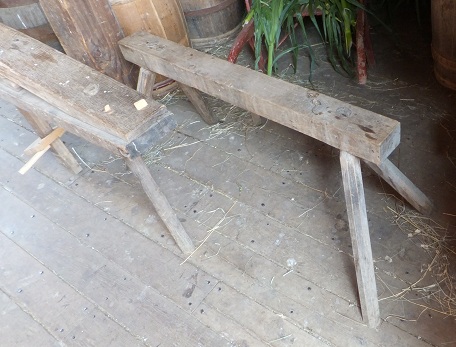 -
- 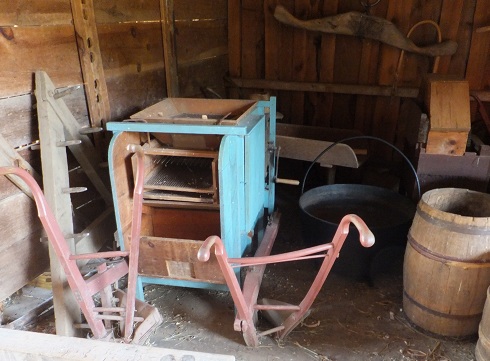
Three legged saw horse. - Plow and a yoke on the wall
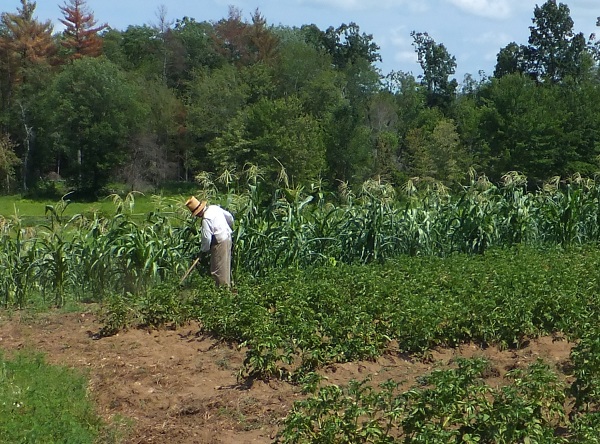
Working in the field, hoeing in the rows, probably cutting weeds.
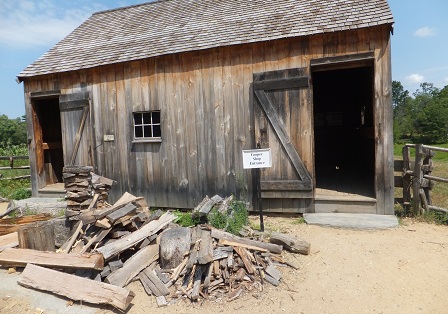
The Cooperage - shed where barrels are made.
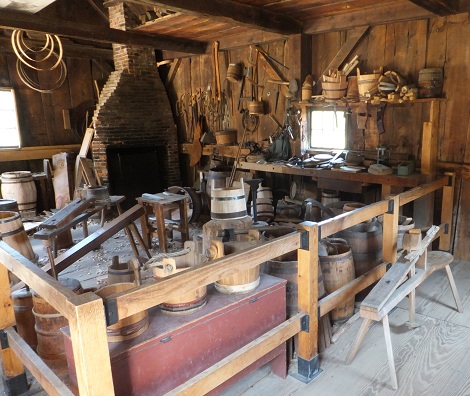 - -
- - 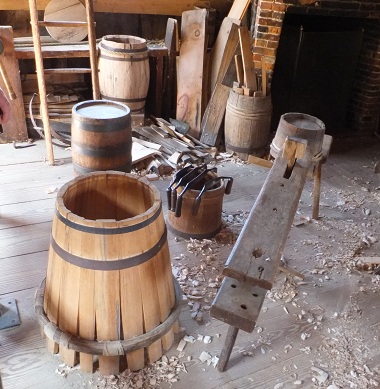
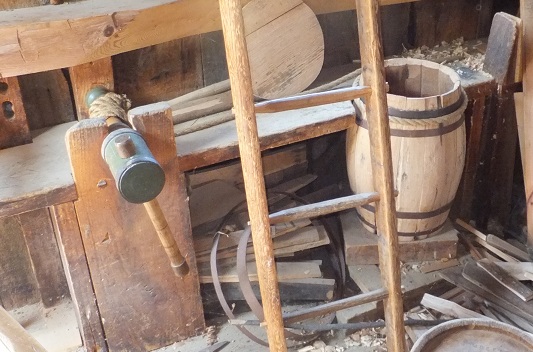
The windless for squeezing the barel staves together so as to get the hoops on.
~ ~ ~
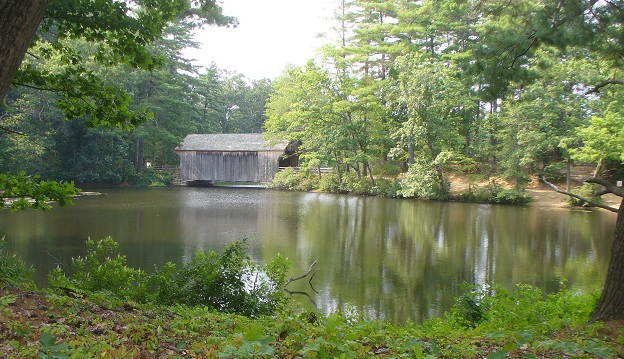
The Millpond with a covered bridge on the far side.
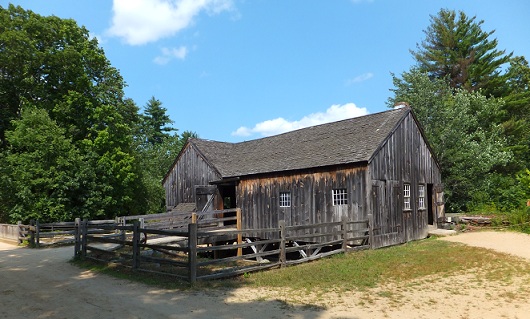
A mill. Water from the millpond is directed under this building to rotate a shaft.
That shaft is linked to belts which are connected to the machines that do the work.
The millpond (raised water part of the little river) powered a sawmill and a mill making batting.
Batting is the flat fluffed wool or cotten which is the middle part of quilts.
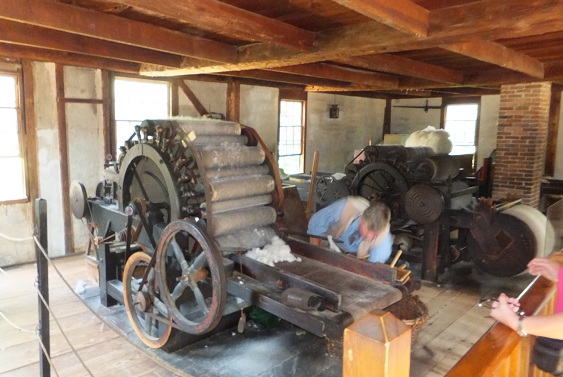
Two machines to make batting. The one further back has finished batting in the big role on the right end.
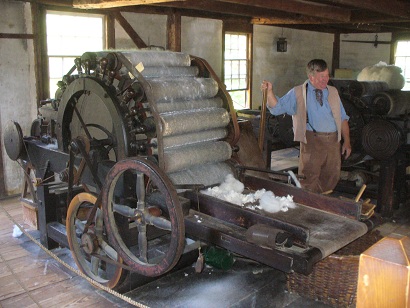 -
- 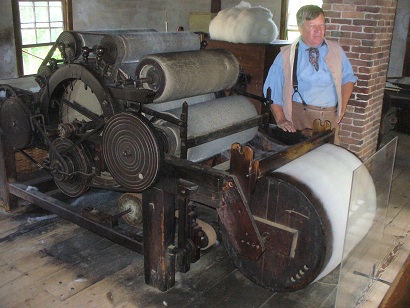
When the operator moved the stick he is holding to allow water to enter the flume to power the machinery
the whole floor of the building rumbled and shook as the water surged and began to power the main drive shaft.
The machinery under the floor of the mill.
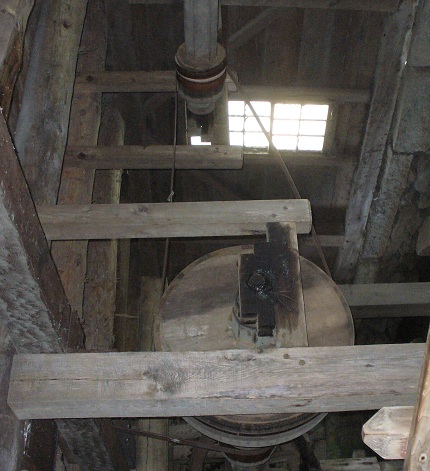
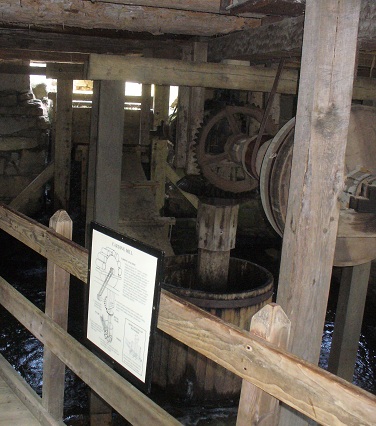
Belt from the main drive to another drive shaft above. - The horizontle wheel within what looks like a flat sided barrel.
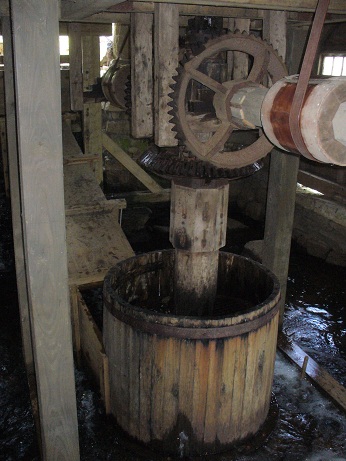
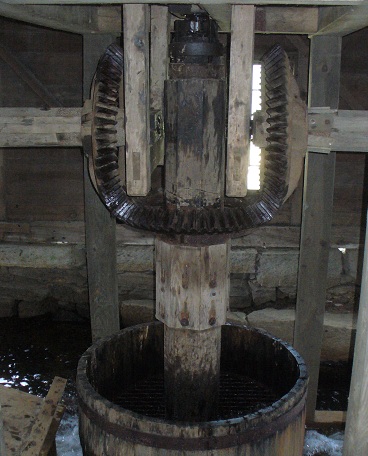
This large wooden gear looks very much like a modern rear-wheel drive car or truck differential.
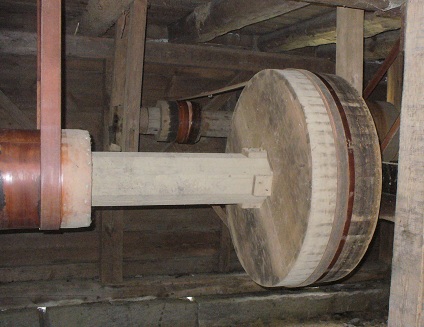
The belt which runs the drive power up through the floor to the machinery above.
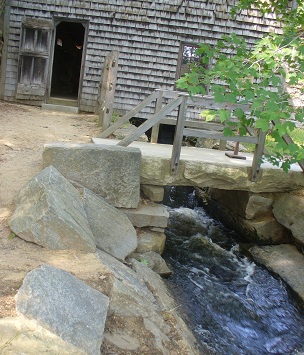
The water, after doing its work, leaves the mill traveling downstream.
~ ~ ~
The Saw Mill
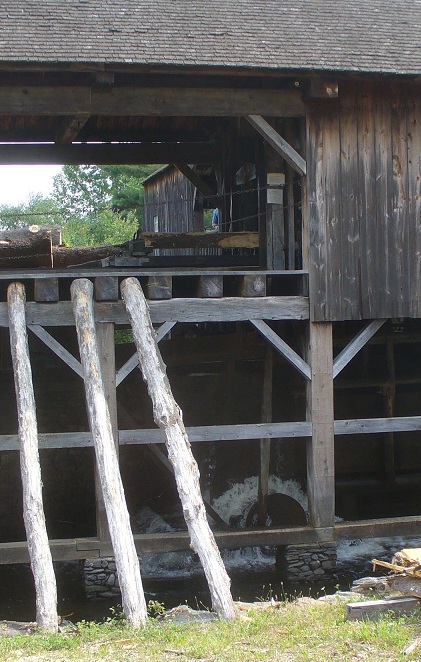 -
- 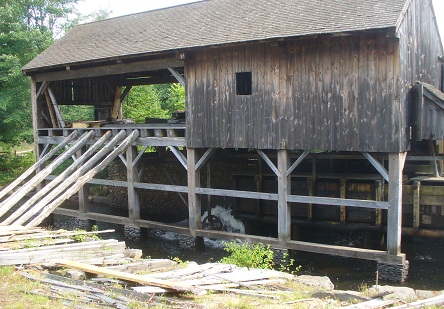
The water wheel on the Saw Mill is vertical.
The power transfers up to the blade in the frame with the vertical beam in the photo.
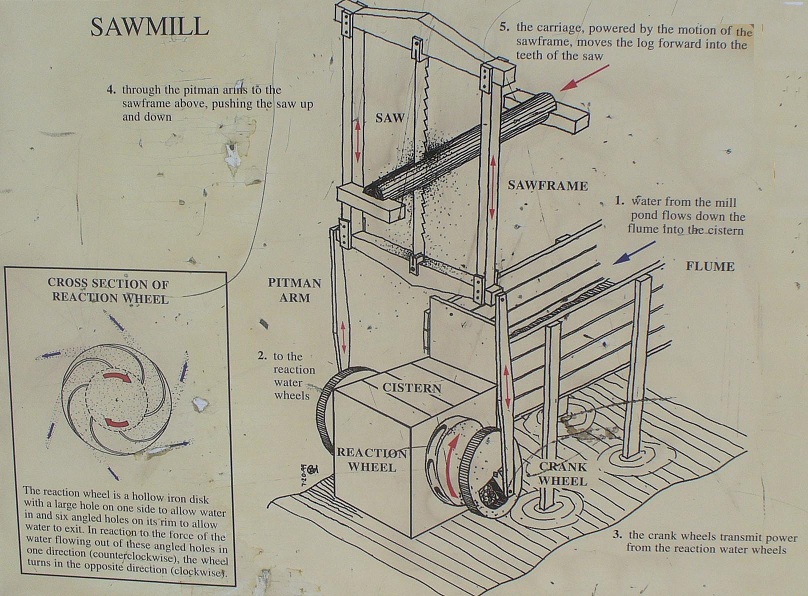
It may seem strange, but the idea of a circular saw blade is a recent development in the history of wood technology.
In the 1810 through 1820 era circular blades were not common.
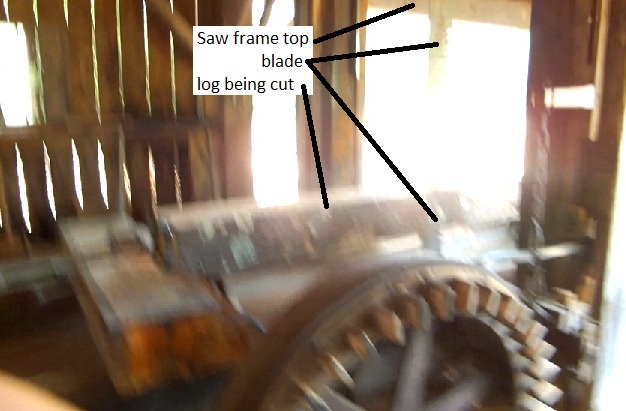
A view of the blade cutting through a log. Photo extracted from a video.
~ ~ ~
The Blacksmith Shop
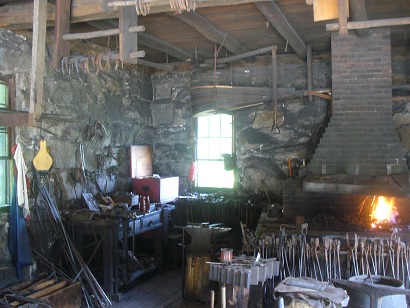 -
- 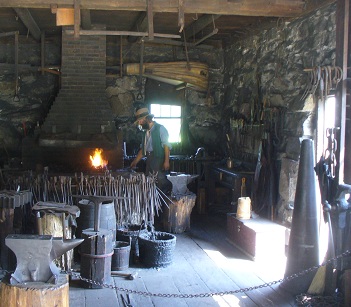
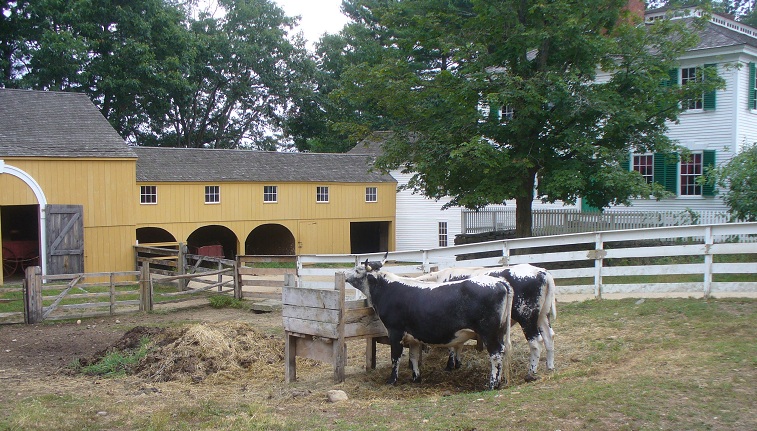
Oxen - pull plows etc. - slow but sturdy - feed on grass and hay - do not need oats or higher level feed as horses do
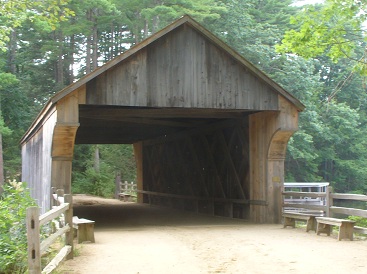
A New England village needs a covered bridge. Covers keeping ice and snow off makes the bridge last longer.
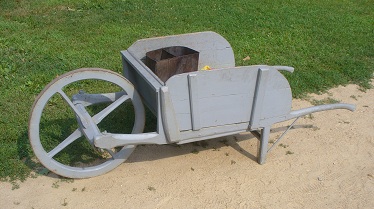 -
- 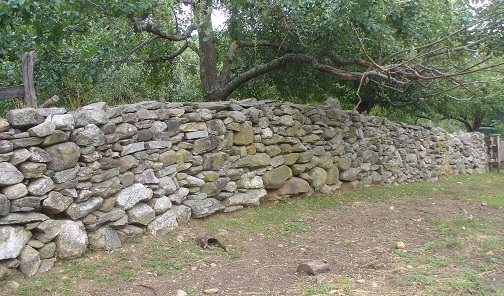
an elegant Wheelbarrow - a necessary tool - New England is fameous for their dry laid stone fences.
Along with the living history parts of Old Sturbridge Village,
the site has several museum-like static displays.
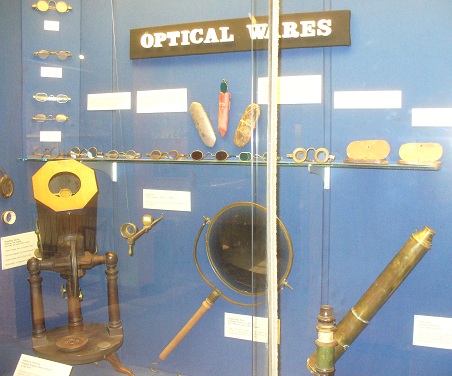 -
- 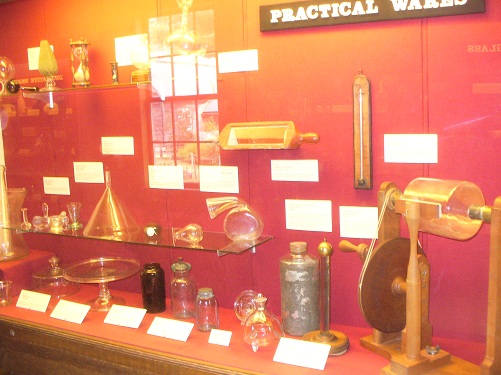
The Optical Wares exhibit is part of a larger glassware exhibit. - Some scientific glassware.
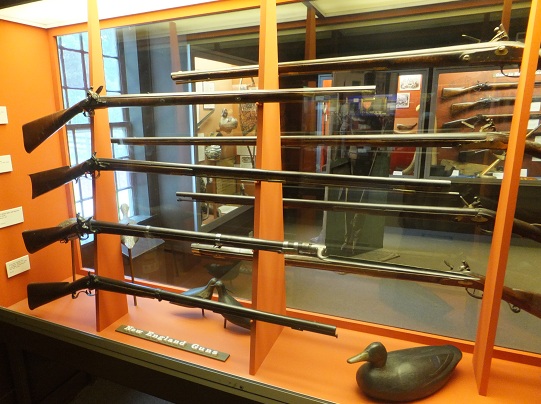
There is a sizable exhibit of firearms.
New England has been the location of a major part of the firearms manufactoring business in USA.
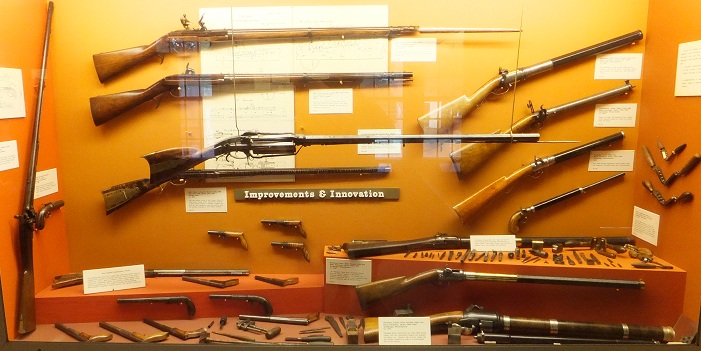
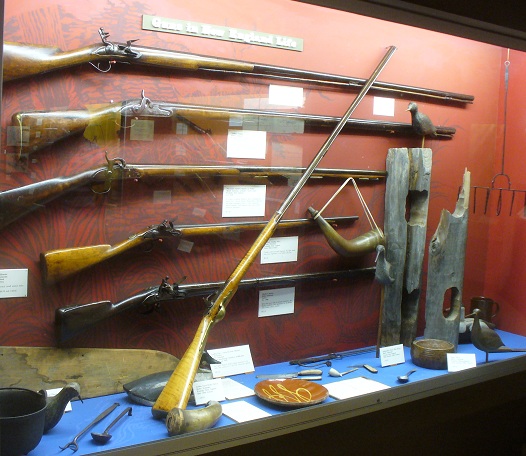
Guns in New England life. Fowling pieces (bird hunting guns) are well represented.
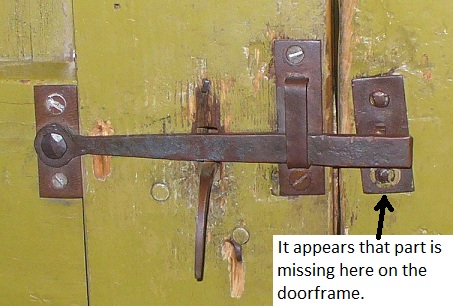 -
- 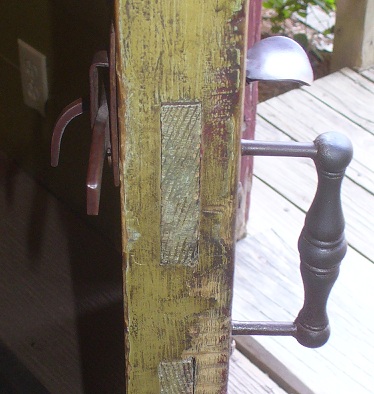
Door latch. In my childhood my grandmothers house had several of this style.
Note the mortise and tenon door construction. A strong way to put wood together.
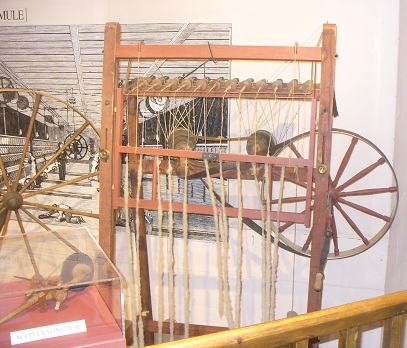 -
- 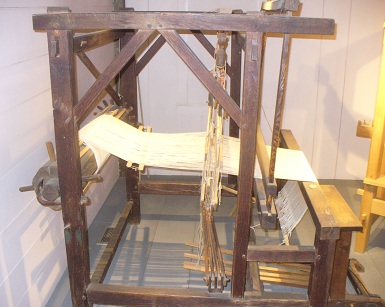
Spinning and weaving - a strong part of New England industry
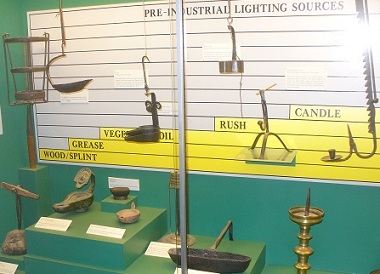
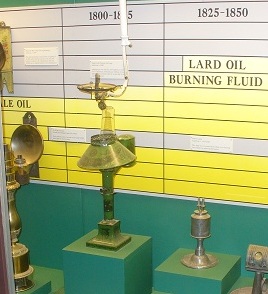
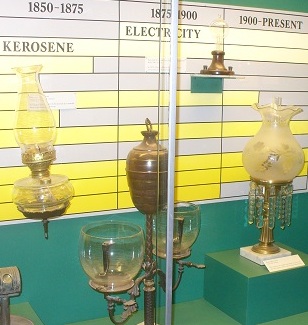
Lighting through modern time - at one time or another each method was used in New England
What I do not see in this exhibit is gas light.
Using natural gas flames was popular in cities at the end of the 1800s and very beginning of the 1900s,
but that was in larger cities which had a gas works.
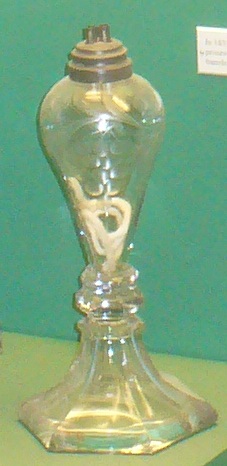 - -
- - 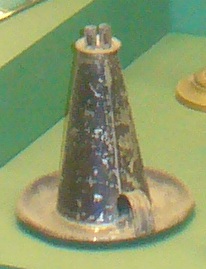 - -
- - 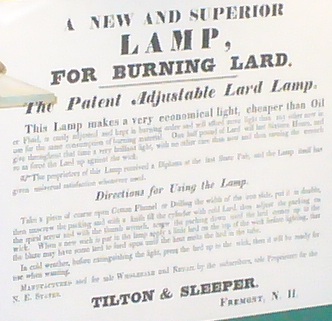
Whale oil lamps - the elegant and the plain - most often had twin wicks.
Whale oil burned much cleaner than lamps which burned lard. But lard was much cheaper to burn.
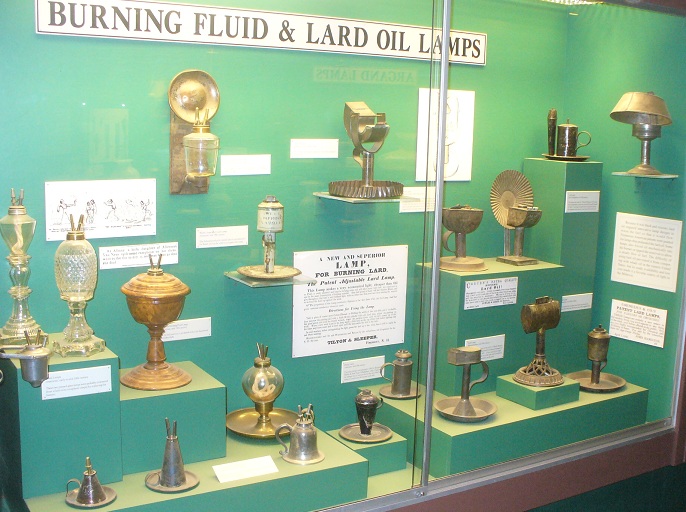
Burning fluid lamps. The fluid mostly being whale oil or lard.
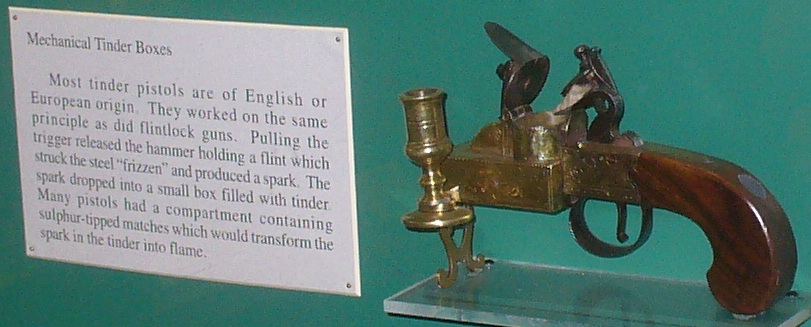
Of course one had to make fire in the first place to light lamps.
The tinder pistol was one device. Matches, as we know them today were expensive.
There were a number of other flint and steel devices for making fire.
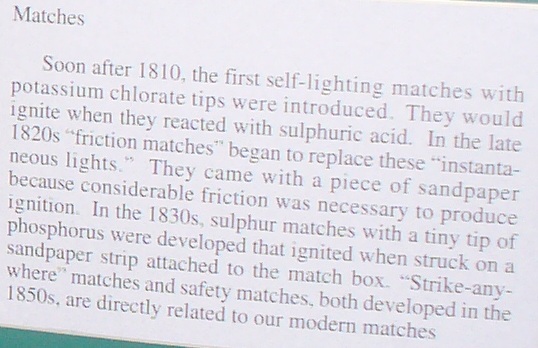
Matches - 1810 - 1850
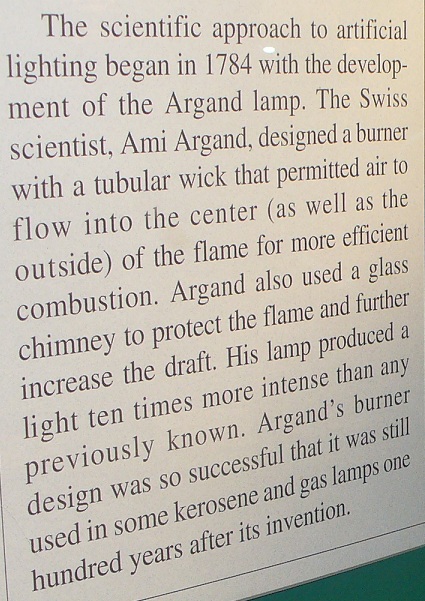 -
- 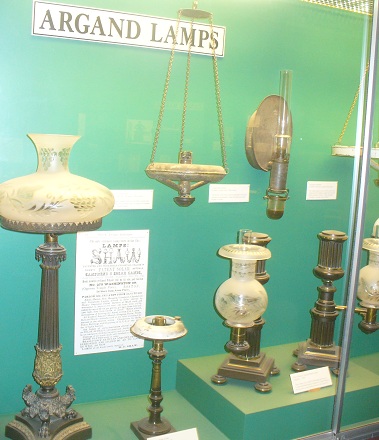
Why this long dissertaton on lighting?
We take it for granted that with a flip of a switch we get light. This is a recent development in history.
Our forefathers had a much different lives. Most of the time they went to sleep soon after sundown.
We, on the other hand, sleep deprive ourselves aided and abeted by cheap and easy lighting.
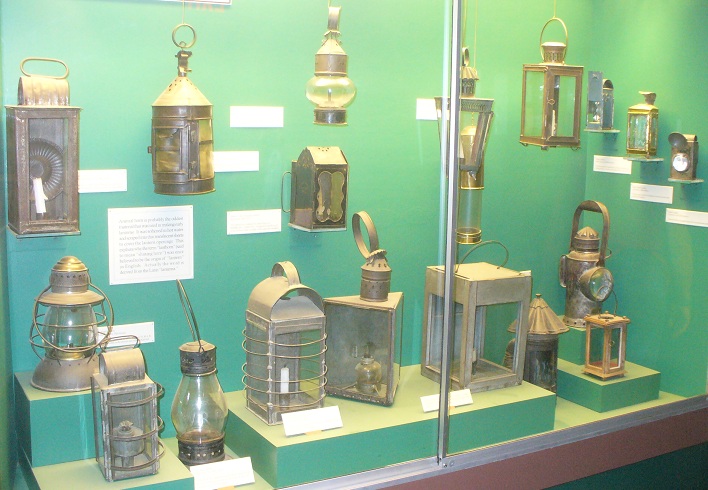
Then there are lanterns - moveable light. Tin lanterns, pierced and/or windowed
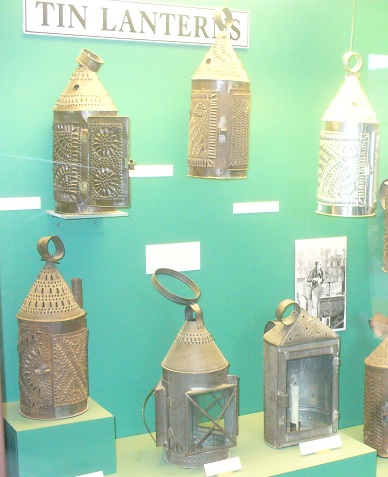
Lastly, Parade Torches, just what every evening and night-time outdoor group needs.
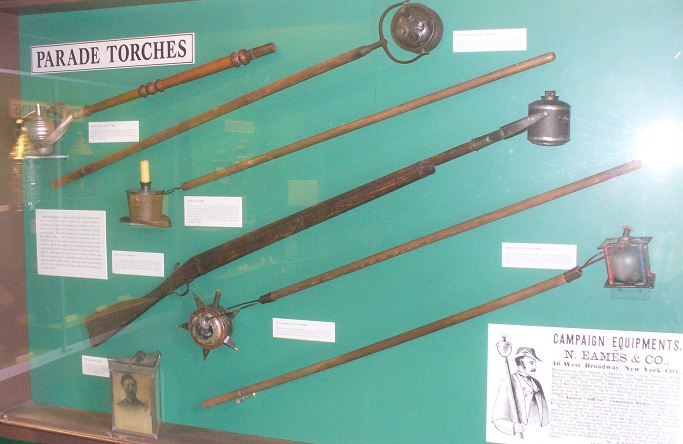
When we drove back to our camping area we decided to drop in and visit our friends before retiring to camp.
James was putting on a demonstration of the EarthView inflatable globe for a large group of high school aged youth.
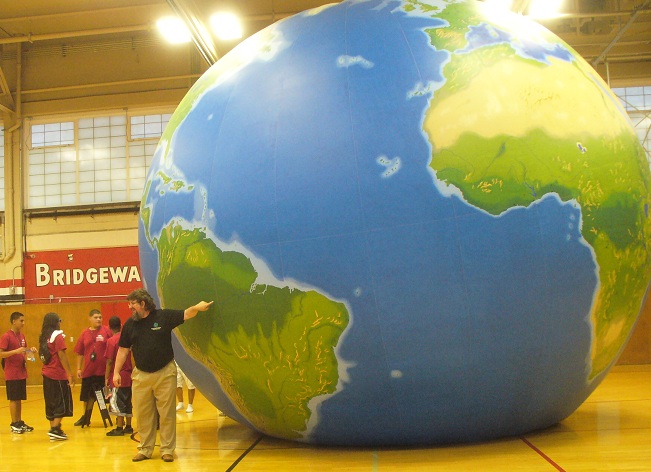
One can get inside the 20 foot diameter inflated globe and have a good look of the Earth from the inside,
making it easier to see spacial locations and relationships of places on Earth.
EarthView information at Bridgewater State University, Massachusetts, USA
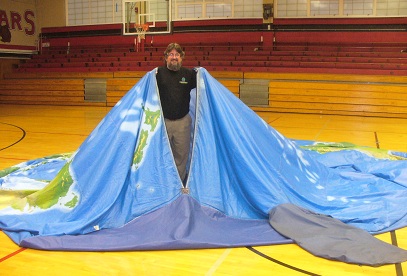
Earthview deflates for folding and storage.
After this very long and interesting day we retired to camp and planned our move to Mystic, Connecticut
via New Bedford, Massachusetts and Newport, Rhode Island.
-
Next - page 11 - - Newport, RI - - Mystic CT
Vacation 2012 Index page.
Vacation Index file
update 24 December 2013
Return to STexBoat Index page.